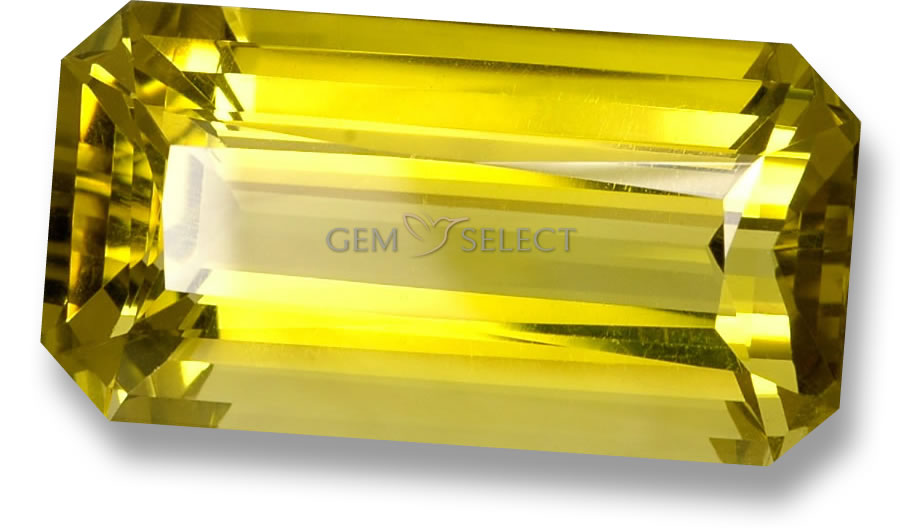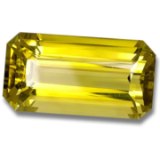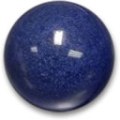Quartz Gemstone Information

About Quartz - History and Introduction
Quartz stands out as one of the most versatile and widely recognized gemstones around the globe. It's celebrated for its clarity, toughness, and an impressive array of colors. Whether it's the dazzling sparkle of clear quartz or the deep tones of amethyst and citrine, these stones have drawn in collectors, jewelers, and those interested in metaphysics for ages. As one of the planet's most plentiful minerals, quartz pops up in all sorts of geological settings, coming in countless shapes and sizes. We'll dive into the various types of quartz gemstones, what they signify, their special traits, and their historical roles in decoration and practical uses. It's no wonder quartz continues to be a favorite - it's got that timeless appeal. Check out our selection of loose quartz gemstones available for purchase.
Quartz comes in two primary categories, each branching into more specific names. All quartz shares the silicon dioxide (SiO2) makeup, but they differ in crystal structure and formation. The main groups are macrocrystalline quartz and cryptocrystalline quartz. Macrocrystalline includes varieties like amethyst, rock crystal, blue quartz, citrine, hawk's eye, prasiolite, quartz cat's eye, smoky quartz, rose quartz, and tiger's eye. This type is usually transparent to translucent with bigger crystals. Cryptocrystalline quartz has tiny crystals, often invisible even magnified. When mixed with moganite - a quartz relative - it's called chalcedony quartz variety. This group covers agate, chrysoprase, bloodstone, jasper, and carnelian. Chalcedony in a strict sense means lighter, single-colored types, often bluish, and tends to be opaque or translucent.
These gemstones are not only eye-catching but also sturdy and hard-wearing. Most quartz crystals are budget-friendly and come in generous sizes. Some varieties are super rare, while others are everywhere. Quartz is incredibly adaptable, shapable into all sorts of forms. For centuries, it's been crafted into jewelry and decorative pieces. Today, it's a key player in the gem trade and has loads of industrial applications too.

Identifying Quartz
Pinpointing quartz isn't done with one simple test; it takes a few to confirm. Gem labs often blend old-school methods with high-tech tools. They look at inclusions and color zoning typical in natural quartz. Infrared spectroscopy maps out light absorption patterns. Quartz also shows piezoelectric effects, like tourmaline and a handful of others. Synthetic versions often sport unnatural colors or ones too bright and bold for nature.
Quartz Origin and Sources
Quartz turns up worldwide. It's a big part of granite and other igneous rocks, common in sedimentary and metamorphic ones too. Crystals can grow massive - think meters long and hundreds of kilos heavy.
Macrocrystalline quartz deposits can be found in (but are not limited to) the following places:
- Amethyst: Brazil, Bolivia, Canada, India, Madagascar, Mexico, Myanmar (Burma), Namibia, Russia, Sri Lanka, United States (Arizona), Uruguay and Zambia
- Ametrine: Brazil and Bolivia
- Aventurine: Austria, Brazil, India, Russia and Tanzania
- Citrine: Argentina, Brazil, Madagascar, Namibia, Russia, Scotland, Spain and the USA
- Hawk's eye: Brazil, India and Sri Lanka
- Prase: Austria, Finland, Germany and Scotland
- Prasiolite: Brazil and the USA (Arizona)
- Quartz cat's eye: Brazil, India and Sri Lanka
- Rose quartz: Brazil, India, Madagascar, Mozambique, Namibia, Sri Lanka and the USA
- Rock crystal: The Alps, Brazil, Madagascar and the USA
- Smoky quartz: Brazil, Madagascar, Russia, Scotland, Switzerland and Ukraine
- Tiger's eye: Australia, India, Myanmar, Namibia, South Africa, Sri Lanka and the USA
Cryptocrystalline quartz deposits can be found in (but are not limited to) the following places:
- Australia: Agate, chrysoprase and bloodstone
- Brazil: Agate, chalcedony, carnelian, bloodstone and bloodstone and chrysoprase
- China: Agate and bloodstone
- India: Agate, chalcedony, bloodstone, carnelian and chrysoprase
- Kazakhstan: Chrysoprase
- Madagascar: Agate, chalcedony and chrysoprase
- Mexico: Agate
- Mongolia: Agate
- Namibia: Agate, blue chalcedony and chalcedony
- Russia: Chrysoprase
- Sri Lanka: Chalcedony
- Uruguay: Agate, chalcedony and carnelian
- South Africa: Chrysoprase
- Tanzania: Chrysoprase
- Zimbabwe: Chalcedony and chrysoprase
- USA: Agate (Montana and Wyoming), chalcedony (California), chrysocolla chalcedony (Arizona), bloodstone and blue chalcedony (California, Nevada, Oregon)
Buying Quartz and Determining Quartz Value
Quartz Color
Macrocrystalline quartz colors span the rainbow, but clear is most common, followed by white or milky. Purple (amethyst), pink (rose quartz), gray or brown to black (smoky quartz) are frequent. Cryptocrystalline types can be multicolored. Quartz shines best in natural daylight, especially around sunrise or sunset. Deeper shades fetch higher prices.
Quartz Clarity and Luster
Top quartz is transparent, letting light flow freely. Translucent versions soften the light a bit. Premium stones are inclusion-free. With quartz so abundant, skip flawed ones unless inclusions add character, like in cat's eye or scenic types. Luster ranges from glassy to vitreous in crystals; cryptocrystalline can be waxy, dull, or vitreous. Crystals lean transparent to translucent; others translucent or opaque.
Quartz Cut and Shape
Quartz crystals often have uneven color, so brilliant rounds maximize it. Even distribution allows other cuts. It's available in calibrated sizes, shapes, and fancies.
Quartz Treatment
Clear quartz goes untreated. Colored ones might get dyed (agate), irradiated, or heated. Some receive wax, resin, or foil for better color, shine, or stability. Synthetics abound. Natural colored quartz shows zoning.
Quartz Gemological Properties
| Chemical Formula: | SiO2, Silicon dioxide |
| Crystal Structure: | a-quartz: trigonal ß-quartz: hexagonal |
| Color: | Colorless, various colors from clear to black |
| Hardness: | 7 on the Mohs scale |
| Refractive Index: | 1.544 - 1.553 |
| Density: | 2.65; 2.59 - 2.63 in impure forms |
| Cleavage: | Indistinct |
| Transparency: | Transparent to opaque |
| Double Refraction or Birefringence: | 0.009 |
| Luster: | Vitreous, waxy to dull |
| Fluorescence: | Usually none |
Please refer to our Gemstone Glossary for details of gemology-related terms.
Quartz Mythology, Metaphysical and Crystal Healing Properties
Leonardo da Vinci noted that amethyst could chase away bad thoughts and sharpen wits. Rock crystal and smoky quartz fueled crystal balls for seers, witches, and gypsies back in the day.
Amethyst is February's birthstone, citrine one for November.
Ancient and medieval folks saw gems mirroring the cosmos. Amethyst ties to Neptune, citrine and tiger's eye to Mercury, rose quartz to Venus, chalcedony to Saturn, smoky quartz to Pluto. The esoteric scene brought this back, and gem sellers use it to highlight stones.
The healing powers of gems spark debate, but healers and shamans have trusted them for ages. Fact or placebo? Unproven, but they seem to aid some. Wear them against skin near the issue. Quartz packs potential. Here's what types link to ailments:
- Headaches: Amethyst, rock crystal, tiger's eye
- Eye inflammation: Rock crystal, chalcedony, hawk's eye, onyx
- Sore throat: Rock crystal
- Heart ailments: Rose chalcedony, rose quartz
- Pancreas: Amethyst, citrine, yellow jasper
- Sciatica: Amethyst, citrine, rose quartz, tiger's eye
- Varicose veins: Rock crystal
- Toenails: Rose quartz
Disclaimer: Metaphysical and Alternative Crystal Healing Powers and Properties are not to be taken as confirmed advice. Traditional, Ceremonial and Mythological Gemstone Lore is collected from various resources and does not represent the sole opinion of SETT Co., Ltd. This information is not to replace the advice of your doctor. Should you have any medical conditions, please see a licensed medical practitioner. GemSelect does not guarantee any claims or statements of healing or astrological birthstone powers and cannot be held liable under any circumstances.
Quartz Gemstone and Jewelry Design Ideas
Quartz makes perfect jewelry - plentiful, affordable, even big pieces won't break the bank. You'll spot it in nearly every shop. As birthstones, amethyst and citrine star in birthstone pieces. Mostly untreated, it fits astrological jewelry too. It's in watches for bezels and parts.
Tough for daily rings or any jewelry. Comes in every color, for men or women. Cuts from cabochons to facets, beads to carvings like paperweights or seals.
Note: Buy colored gemstones by size and not by carat weight. Colored stones vary in size-to-weight ratio. Some stones are larger and others are smaller than diamonds by weight in comparison.
Famous Quartz Gemstones
Chrysoprase charmed Frederick the Great of Prussia; it adorns Prague buildings like St. Wenceslas Chapel.
Amethysts grace British Crown Jewels, favored by Catherine the Great and Egyptian royals. Once "the stone of bishops" in church ranks.
A top rock crystal is the Smithsonian's 12.75-inch, 107-pound flawless ball.
Quartz was among first synthetics, boosted in WWII for radios. Now key in electronics.
Quartz Gemstone Jewelry Care and Cleaning

Quartz boasts good hardness and durability, though brittle with conchoidal fracture. Harder than many materials but softer than sapphire or diamond. Most types clean easily, but porous like agate absorb stains. Use water and mild soap, soft cloth wipe, rinse residue. Skip long light/heat exposure or temp swings. Avoid ultrasonics or steamers.
Remove quartz jewelry before sports, chores like dishwashing. Store separately to prevent scratches, wrap in cloth or fabric-lined box.
Frequently Asked Questions
What is quartz?
Quartz is a mineral composed of silicon dioxide (SiO2), one of the most abundant on Earth, known for its variety in colors and forms used as gemstones.
What are the main types of quartz?
Quartz divides into macrocrystalline (larger crystals like amethyst, citrine) and cryptocrystalline (tiny crystals like agate, jasper).
Is quartz treated?
Clear quartz is untreated, but colored varieties may be dyed, irradiated, heated, or coated for enhancement.
Where is quartz found?
Quartz occurs worldwide, with major sources in Brazil, India, Madagascar, and the USA, among others.
What are quartz's healing properties?
Some believe quartz aids various ailments, but these claims are not scientifically proven. Consult a doctor for medical issues.


